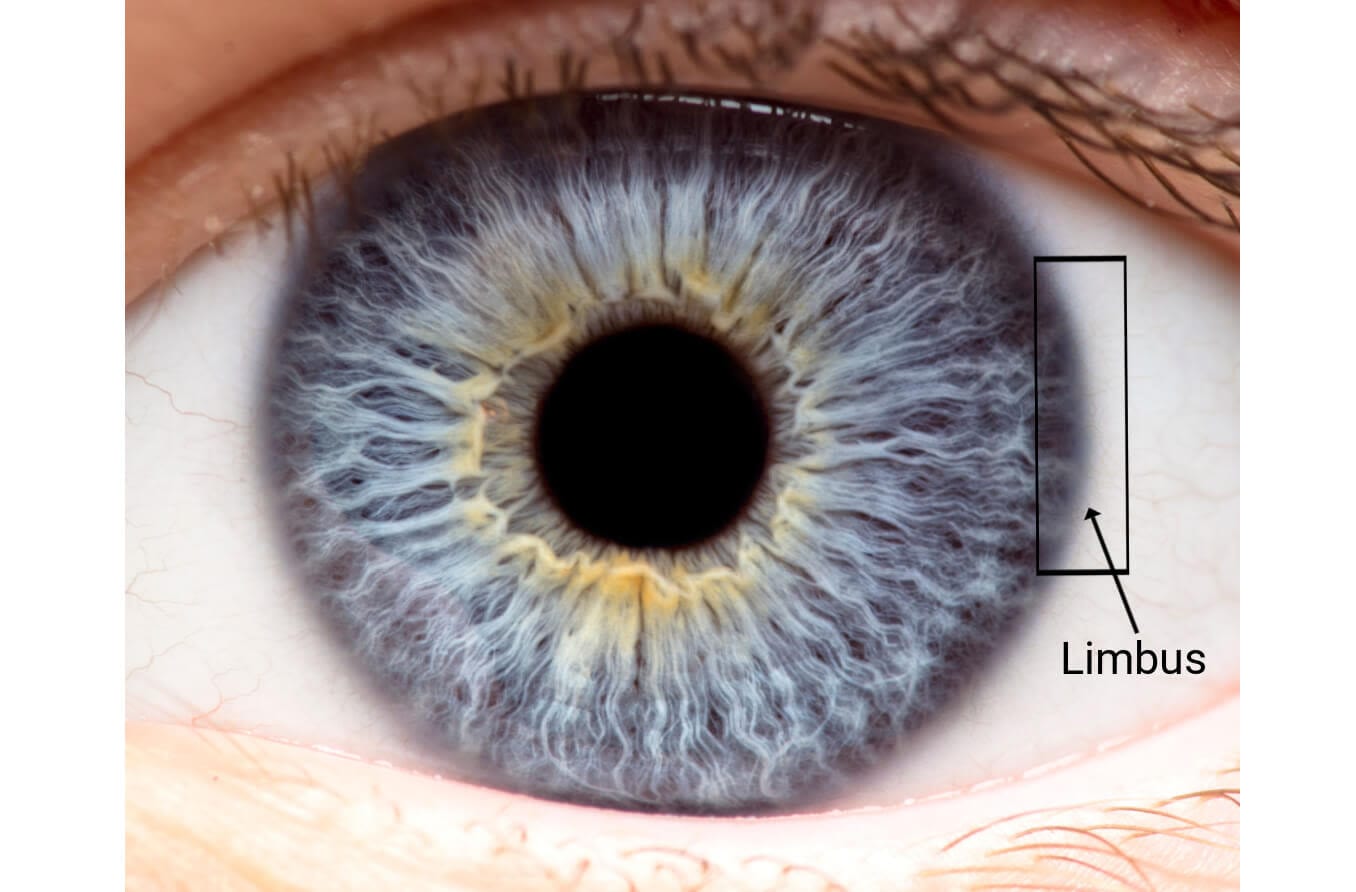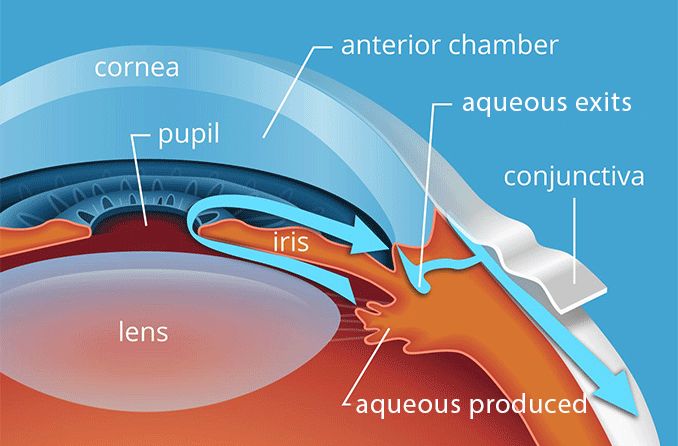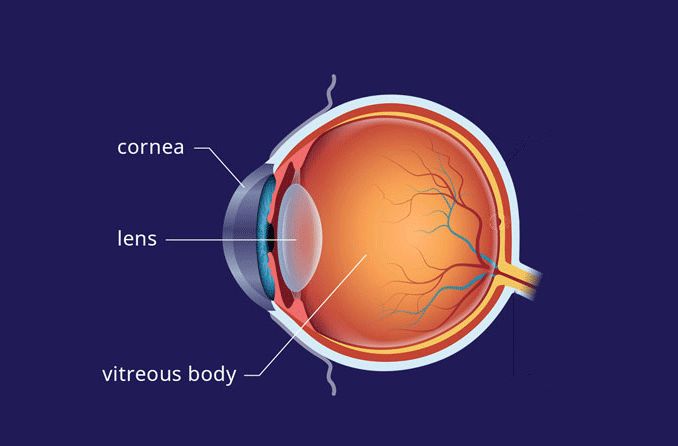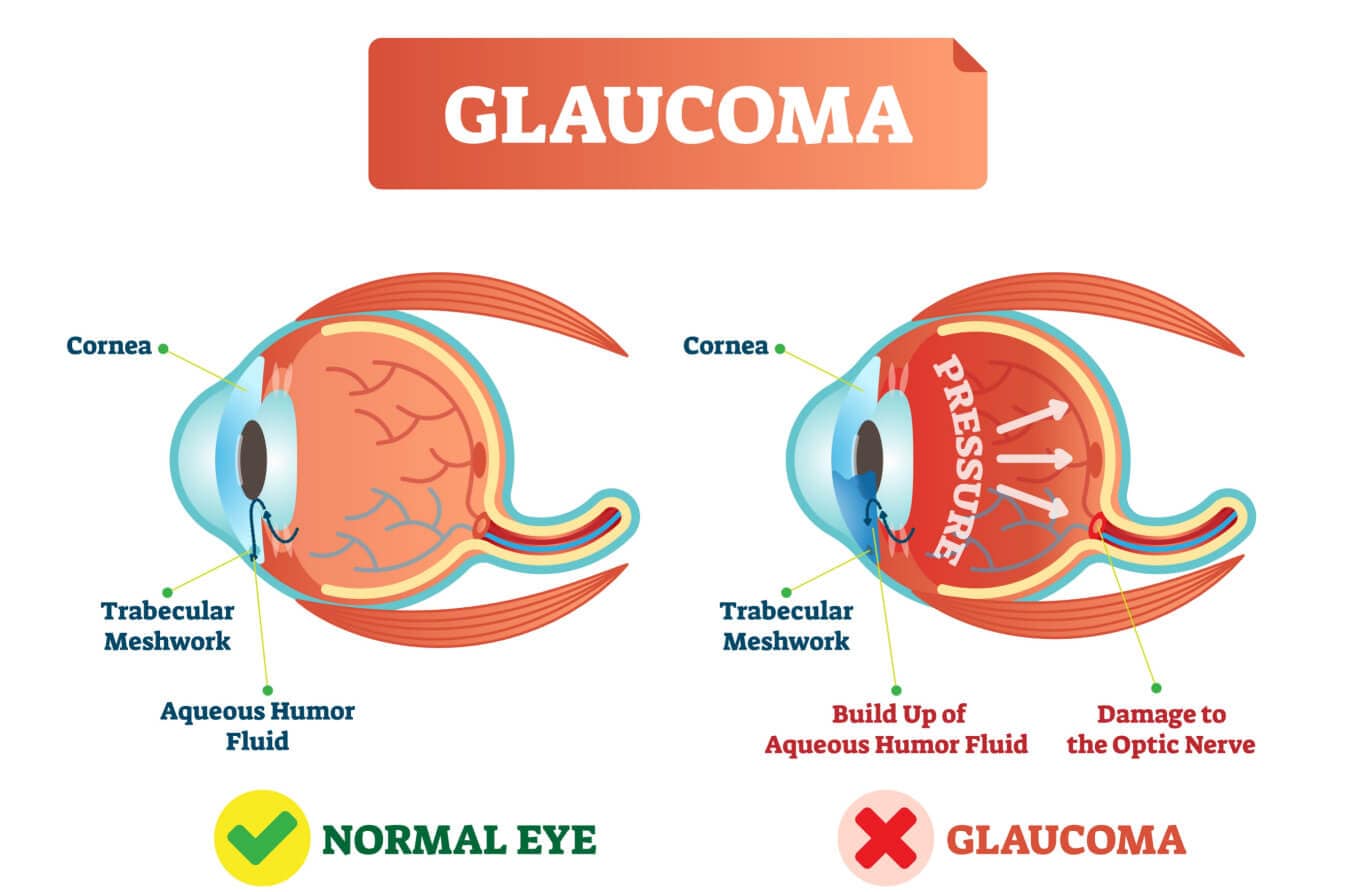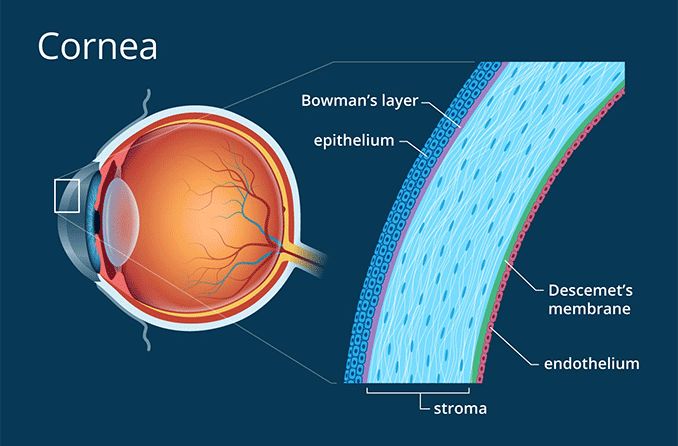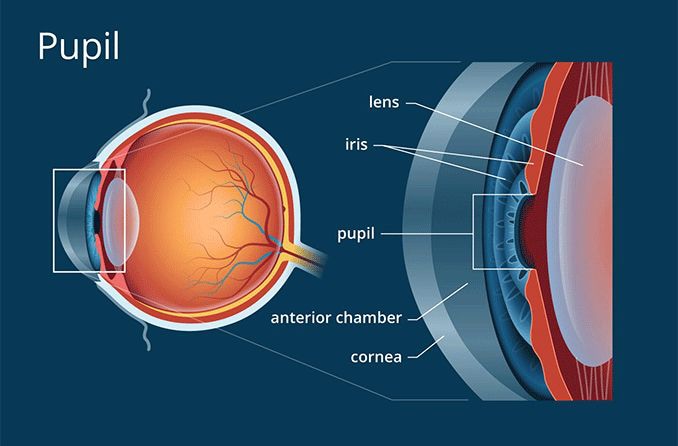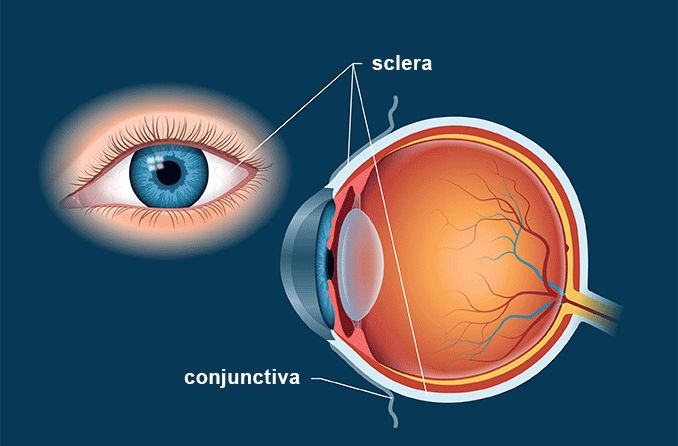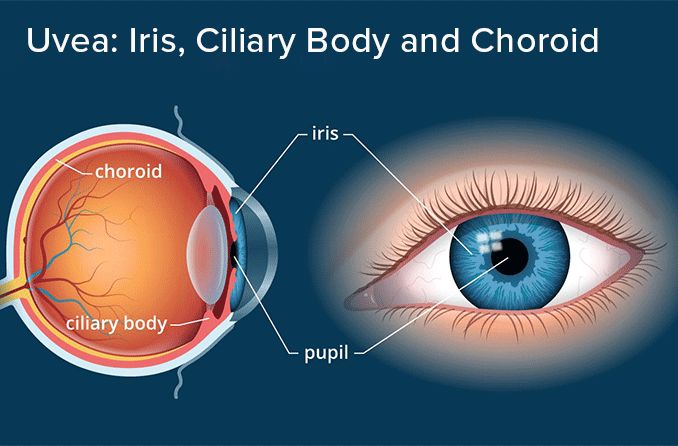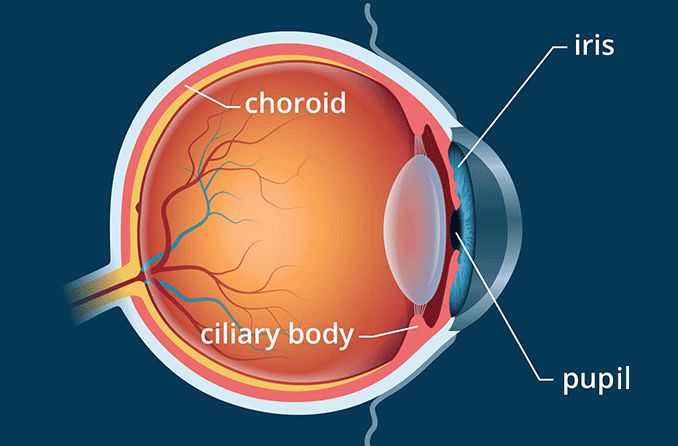Limbus anatomy
The limbus of the eye marks the transition between the cornea and sclera. It is a ring-shaped area that starts off transparent by the cornea and becomes opaque near the sclera. The limbus is typically around 1-2mm wide and helps keep the cornea healthy and clear.
The cornea is the clear covering at the center of the eye. It helps protect the eye and focuses light. The sclera, sometimes called the “white of the eye,” covers the rest of the eye, from the edge of the cornea to the optic nerve. It also acts as protection and helps maintain the eye’s shape.
The limbus is not a distinct anatomical structure. Instead, it is a transition zone between the clear cornea and opaque sclera. On the surface of the eye, it is located where the cornea’s curvature protrudes out from the sclera. The word limbus means “border” in Latin.
There are several important ocular structures located at the limbus. The outermost layer consists of the conjunctiva, which lies on top of a unique tissue called the palisades of Vogt. Under that is a layer of episcleral tissue, followed by the corneoscleral stroma. This is the junction where the corneal and scleral stroma meet. The deepest part of the limbus contains the collector channels.
Conjunctiva
The conjunctiva is a thin, clear layer that covers the inside eyelids and sclera. It provides mucus to help the eye make tears and is imperative for keeping the eyes moist.
Palisades of Vogt
The palisades of Vogt (POV) are folds of fibrovascular tissue in the limbus. Fibrovascular tissue is a combination of blood vessels and fibrous tissue. Fibrous tissue, or connective tissue, supports stability and movement throughout the body. It is made up of fibers that intertwine like ropes. Blood vessels — arteries, veins and capillaries — are tubes that carry blood between the heart and the rest of the body.
The POV folds fan out radially from the cornea. They contain limbal crypts or niches that are home to limbal epithelial stem cells (LSCs). The blood vessels in these crypts supply nutrients to the LSCs. The palisades of Vogt protect them from UV light.
Episclera
The episclera sits between the conjunctiva and the sclera. It is a thin layer made up of loose connective tissue. Connective tissue helps bind things together and provides structure and protection.
Junction of corneoscleral stroma
The stroma is a structural layer of connective tissue. The corneoscleral stroma is made up of collagen fibers. Collagen is the most common protein in the body. It helps form everything from skin and muscles to bones and connective tissue.
The collagen fibers in the corneal stroma are consistent in both thickness and density. The fibers in scleral stroma, on the other hand, are more randomized. This is partially what makes the sclera opaque. The junction where the stroma changes from one structure to the other is in the limbus.
Collector channels
Collector channels help with the outflow of aqueous humor. This important liquid is located in the anterior segment (front part) of the eye. It brings nutrients to the front of the eye and helps the eye retain its shape. The eye is constantly producing, and getting rid of, aqueous humor.
However, if too much aqueous humor builds up, it can increase intraocular pressure. This can cause issues like glaucoma and vision damage. This is why collector channels are so important — they help ensure that intraocular pressure doesn’t get too high.
Function of the limbus
The limbus is a critical structure for the cornea. It provides nourishment, healing and a barrier between the cornea and sclera.
The cornea is avascular, meaning there are no blood vessels that directly feed into it. This is what keeps the cornea clear. However, just like any other part of the body, it needs nourishment. The blood vessels of the limbus and the tear film on the surface of the eye provide this nourishment. The existence of the limbus allows the cornea to remain clear and avascular.
The limbus also provides a structural barrier between the cornea and sclera. This helps prevent conjunctival cells from entering the cornea.
Limbal stem cells
Limbal stem cells (LSCs) play a major role in the cornea’s everyday health, as well as in cases of injury. These cube-shaped cells multiply rapidly. This allows them to immediately move into the cornea if it becomes injured or damaged. They also contain melanin to help prevent damage from UV rays. Melanin helps produce pigmentation, particularly in the eyes, skin and hair.
LSCs reside in the palisades of Vogt in the limbal epithelial crypts. As people age, the size and efficiency of LSCs decreases.
Problems that can affect the limbus
There are a variety of issues that can impact health in and around the limbus. The most well-known is limbal stem cell deficiency (LSCD).
Limbal stem cell deficiency occurs when LSCs or their crypts are damaged. This damage impacts the health of the cornea’s outer layer (the epithelium). It allows the cells of the conjunctiva to take over, which is called conjunctivalization. This can lead to a condition called corneal neovascularization.
Neovascularization occurs when new blood vessels develop where they shouldn’t. In some cases, there may be too many vessels growing. When this happens, the cornea can become opaque, resulting in vision loss. It may also cause pain and light sensitivity (photophobia).
Eye doctors will look at the health of both the limbus and the cornea in order to diagnose LSCD. They can also run tests to determine if there are conjunctival cells in the cornea.
Treatments for LSCD are dependent on the severity of the condition. Severity is based on whether or not there are remaining LSCs. For milder cases, treatment options include:
Therapeutic soft contact lenses
Therapeutic scleral lenses
Corneal scraping
Amniotic membrane transplant
For severe cases in which the patient no longer has LSCs, the only treatment options are various types of stem cell transplants. These transplants may involve healthy eye tissue or stem cells from the patient or from a donor.
It is possible for LSCD to occur without a known cause. But there are also many conditions related to the cornea and conjunctiva that can affect limbal health. These include mechanical, immune, neoplastic and degenerative issues. They can lead to LSCD if they damage the limbal tissue.
Mechanical conditions are caused by the continuous impact of different forces on the eye’s surface. These include:
Contact lens complications – Contact lenses can damage the limbus over time. They may interfere with tear exchange. This process allows tears to move between the lens and the surface of the eye. It is important for keeping the eye safe with contacts in.
Superior limbic keratoconjunctivitis (SLK) – SLK involves chronic (long-lasting) inflammation of the limbus and conjunctiva. While the cause is unknown, it may be linked to a loosening of the conjunctiva. This can create a poor interaction with the upper eyelid.
Dellen – Dellen are shallow indentations that can develop on the edge of the cornea. They may be caused by issues in the tear film that lead to dehydration.
The immune system fights off harmful substances in order to keep the body safe. Some of these responses can impact the limbus. These include:
Phlyctenulosis keratoconjunctivitis – Phlyctenulosis keratoconjunctivitis involves an immune response from the conjunctiva and cornea. This response, typically to bacteria, can create small red bumps on the eye.
Marginal keratitis – Marginal keratitis is triggered by staphylococcal bacteria. The body’s response to the bacteria’s presence in the cornea can cause the epithelium to break down, leading to ulcers.
Mooren’s ulcer – Mooren’s ulcer develops first in the limbus with intense inflammation. The inflammation can cause swelling in the episclera and conjunctiva. This leads to severe inflammation of the cornea (keratitis) and the growth of an ulcer.
Vernal keratoconjunctivitis (VK) – VK is caused by seasonal allergies. It is a chronic condition that can cause inflammation in the conjunctiva and sclera. It can also create hard bumps on the upper eyelid and a stringy discharge.
Peripheral ulcerative keratitis (PUK) – PUK causes corneal epithelial defects, or loss of the top layer of the cornea. It also often presents with disintegration of the stroma, the cornea’s thickest layer. PUK is linked to many autoimmune diseases, most commonly rheumatoid arthritis.
LEARN MORE about types of keratoconjunctivitis and keratitis
Neoplasms and calcium buildup can both impact the limbal area. Neoplasms, more commonly called tumors, are masses of abnormal cell/tissue growth. These may be malignant (cancerous) or benign (non-cancerous). These include:
Pterygium (Surfer’s Eye) – A pterygium is a conjunctival growth that can spread onto the cornea. It is fleshy and often wing-shaped. The growth is most common in those who spend a lot of time in the sun without protecting their eyes.
Band keratopathy – Band keratopathy is characterized by deposits of calcium in the cornea. Some conditions can impact the body’s calcium levels. When this occurs, the calcium may build up in a band or belt across the cornea. This can cause cloudiness on the normally clear cornea.
Carcinoma in situ – This is a pre-invasive stage of conjunctival squamous cell carcinoma (CSCC). CSCC usually originates at the limbus before becoming invasive. It is rare, but it is the most common type of non-pigmented ocular surface cancer.
LEARN MORE about types of keratopathy
Degeneration, or deterioration, of the cornea can also impact the limbus. These conditions include:
Terrien’s marginal degeneration (TMD) – TMD is a condition that causes the cornea to slowly thin. This thinning is especially apparent around the edge of the cornea. Over time, the edge of the cornea may grow flat, leading to astigmatism and other vision problems.
Pellucid marginal degeneration (PMD) – PMD causes corneal thinning and bulging (ectasia). As the condition worsens, it can lead to astigmatism and other vision problems.
When to see a doctor
If your cornea is no longer clear, or if you are experiencing pain, vision loss or light sensitivity, seek help from your eye doctor immediately.
Annual eye exams allow your eye doctor to monitor the health of your cornea, which also reflects the health of your limbus. It's important to have yearly exams even if you don't notice any eye or vision symptoms.
The earlier that LSCD is caught, the more effective treatments will be.
SEE RELATED: What Is Corneal Ectasia?
